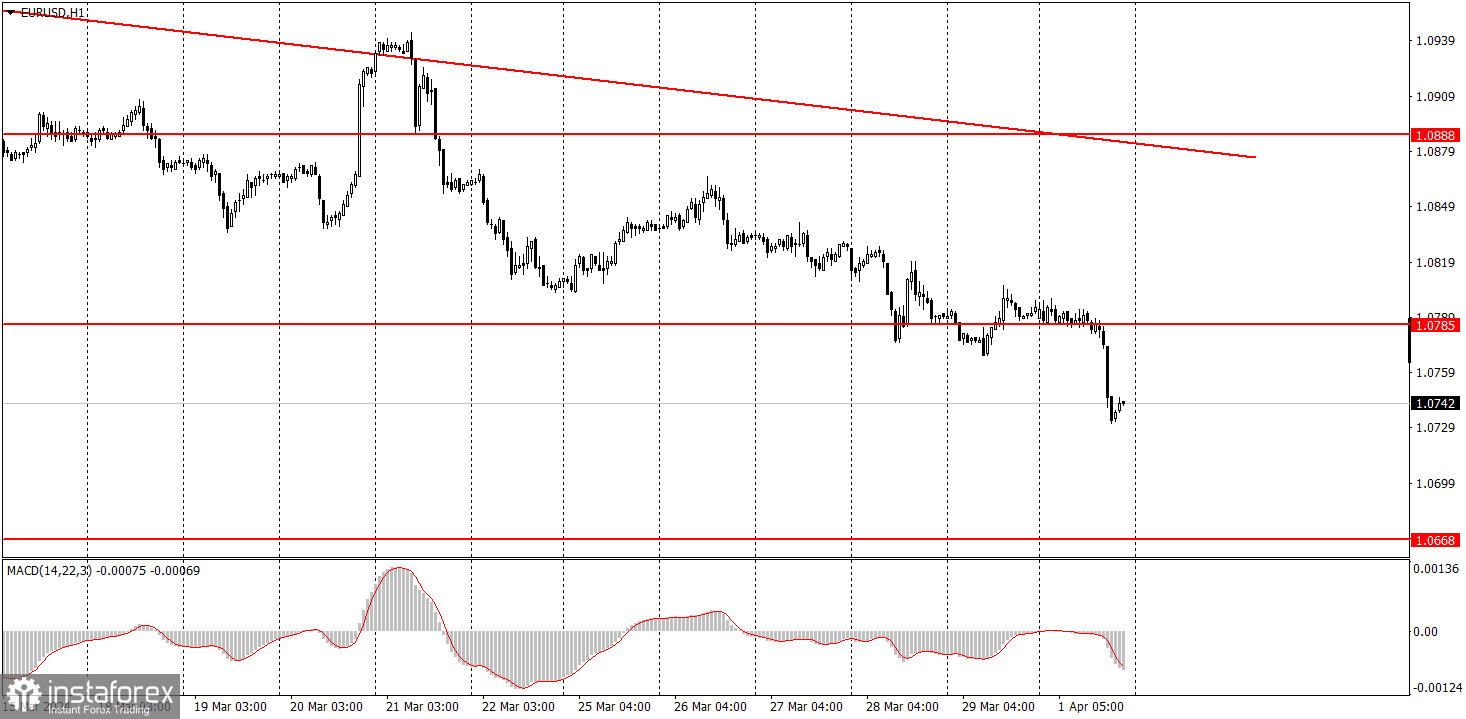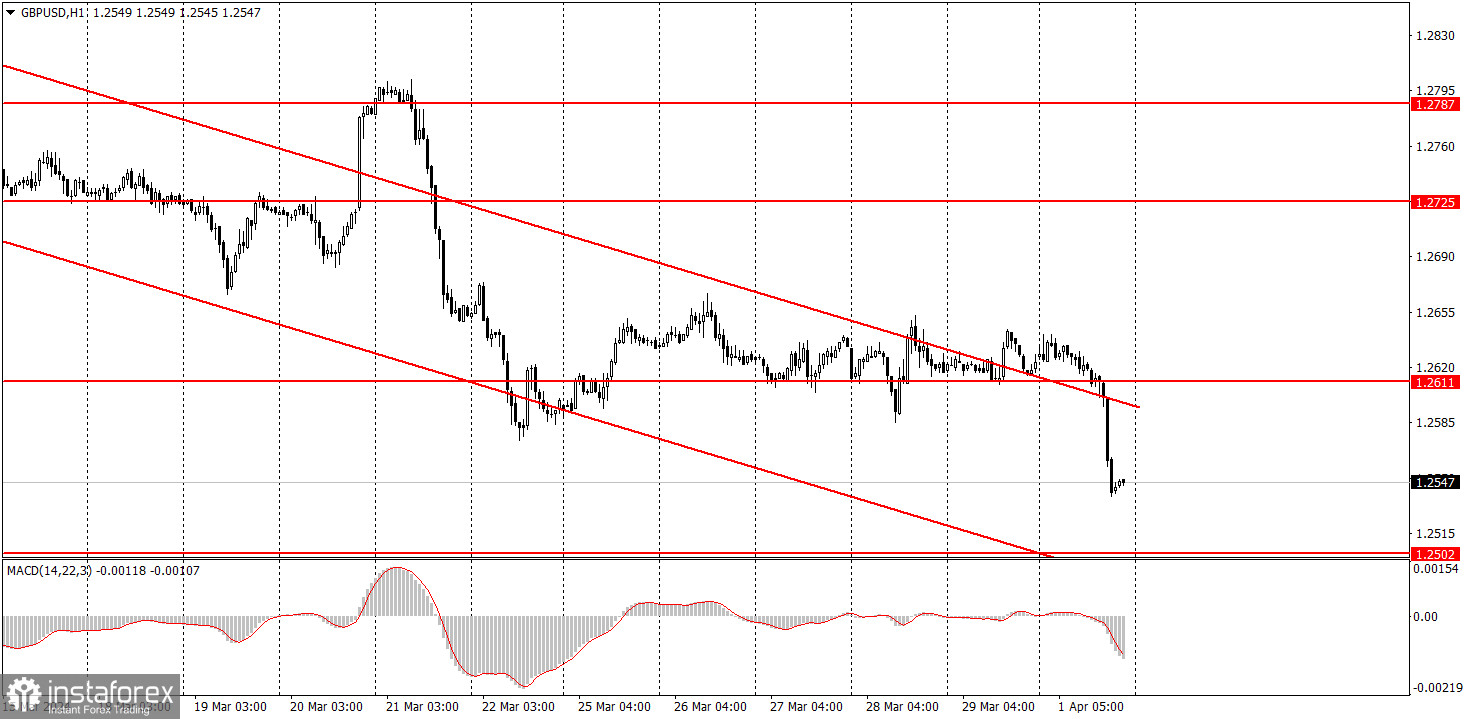Analysis of macroeconomic reports:

There are slightly more macroeconomic events scheduled for Tuesday. However, on Monday, there was the important US ISM Manufacturing PMI data, which triggered a significant decline in both currency pairs. On Tuesday, we won't see such crucial reports. We will highlight the Consumer Price Index in Germany and the JOLTs report on job openings in the United States. The first report is important because inflation may decrease to as low as 2.2%. Eurozone inflation currently stands at 2.6%, but a decline in German inflation would mean that inflation in the EU would also continue to decrease. The more inflation falls, the closer we are to the European Central Bank's first rate cut. Therefore, this report could trigger a new decline in the euro, which would be completely logical. The JOLTs report is simply important. A strong value will support the dollar, while a weak one will support the euro and the pound.
Analysis of fundamental events:

Among the fundamental events of Tuesday, we will highlight the speeches of the Federal Reserve representatives - Michelle Bowman, Loretta Mester, and Mary Daly. These officials will likely show a hawkish stance, so the dollar may continue to rise today. Moreover, it's unlikely that the speeches themselves will be able to boost the dollar. Rather, they will influence the overall fundamental background - the market will become even more convinced that the Fed is not planning to start monetary policy easing in the near future.
General conclusion:
On Tuesday, there will be few important macroeconomic and fundamental events. Novice traders should pay attention to the German inflation data and the US JOLTs figures. These reports are not as crucial as the ISM index, but they can still influence the movement of both currency pairs. And today, we expect both instruments to fall further.
Basic rules of a trading system:
1) Signal strength is determined by the time taken for its formation (either a bounce or level breach). A shorter formation time indicates a stronger signal.
2) If two or more trades around a certain level are initiated based on false signals, subsequent signals from that level should be disregarded.
3) In a flat market, any currency pair can produce multiple false signals or none at all. In any case, the flat trend is not the best condition for trading.
4) Trading activities are confined between the onset of the European session and mid-way through the U.S. session, after which all open trades should be manually closed.
5) On the 30-minute timeframe, trades based on MACD signals are only advisable amidst substantial volatility and an established trend, confirmed either by a trendline or trend channel.
6) If two levels lie closely together (ranging from 5 to 15 pips apart), they should be considered as a support or resistance zone.
How to read charts:
Support and Resistance price levels can serve as targets when buying or selling. You can place Take Profit levels near them.
Red lines represent channels or trend lines, depicting the current market trend and indicating the preferable trading direction.
The MACD(14,22,3) indicator, encompassing both the histogram and signal line, acts as an auxiliary tool and can also be used as a signal source.
Significant speeches and reports (always noted in the news calendar) can profoundly influence the price dynamics. Hence, trading during their release calls for heightened caution. It may be reasonable to exit the market to prevent abrupt price reversals against the prevailing trend.
Beginners should always remember that not every trade will yield profit. Establishing a clear strategy coupled with sound money management is the cornerstone of sustained trading success.
 English
English 
 Русский
Русский Bahasa Indonesia
Bahasa Indonesia Bahasa Malay
Bahasa Malay ไทย
ไทย Español
Español Deutsch
Deutsch Български
Български Français
Français Tiếng Việt
Tiếng Việt 中文
中文 বাংলা
বাংলা हिन्दी
हिन्दी Čeština
Čeština Українська
Українська Română
Română

